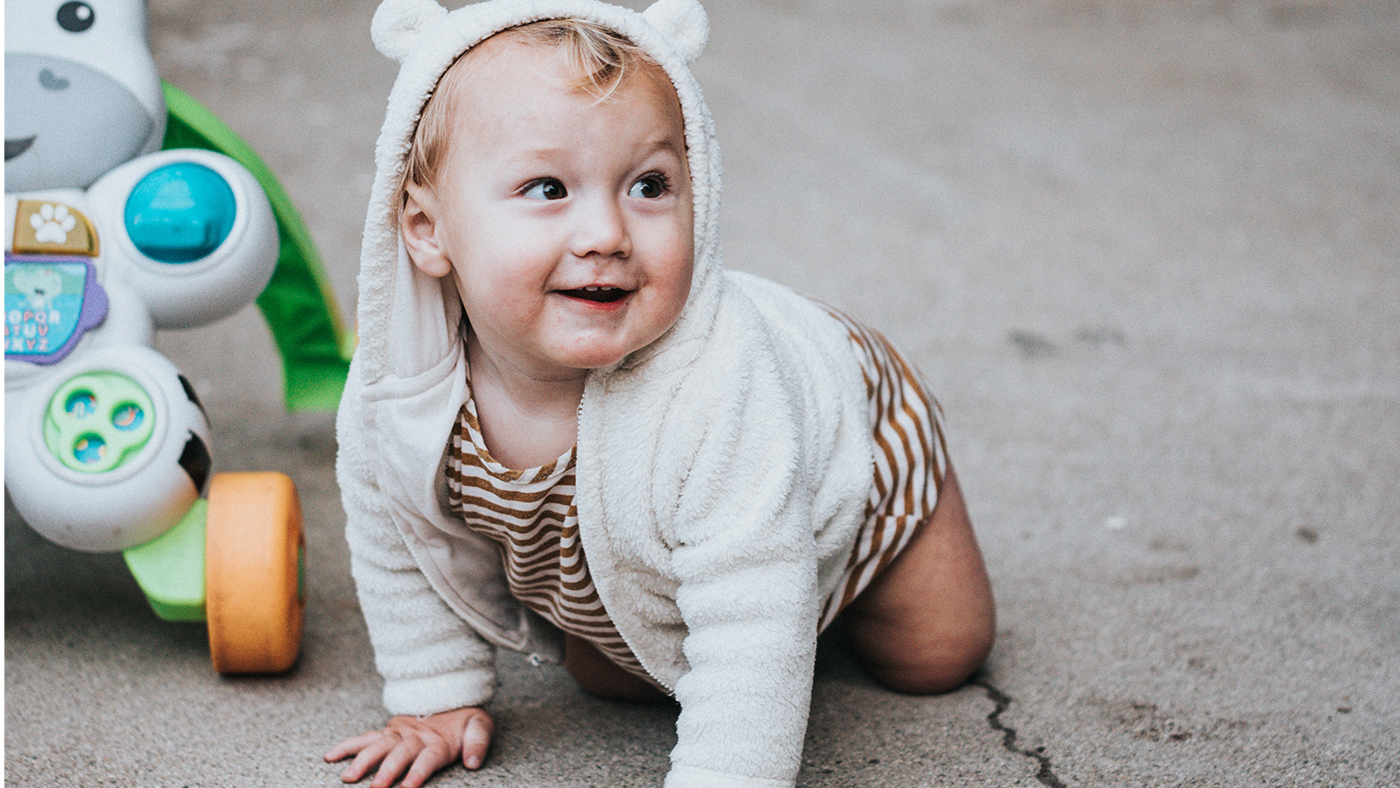Begins to move in a more purposeful way, has a preferred way of moving; e.g., crawling or scooting

Your baby has been learning how to use their muscles and how to coordinate their body in order for them to move. They may have started to crawl, bottom shuffle or scoot around, enjoying their new mobility.
Your baby by now has most probably developed their own unique way of moving, one that suits their gross motor developments. Their movements are now purposeful, personal to themselves.
Why is my baby moving in this way?
Now, as your baby’s body develops, upper body strength, core strength and strength in arms and legs will increase. They are now exploring their strength with coordination, balance and speed. When a baby moves, the brain learns, and when they practice their movements, the brain connections are strengthened and new skills can be achieved.
Bernstein suggested that the brain better controls large muscle groups rather than individual units meaning that muscles work in a coordinated way. When muscle groups work together, they can coordinate independent movements. Your baby’s brain will coordinate a way of moving that is personal to themselves. [1] Within each form of movement, babies use arms, legs, abdomen and head in various combinations for support and propulsion.[2] These movements demonstrate the development of your baby’s coordination between the trunk and the extremities.
Vision, cognitive development and movement
When babies are learning to move more freely and independently, there is much more than gross motor development in progress. Motor learning requires many cognitive operations, such as perception and action planning. There have been many different research studies into why babies start to move and what they learn.
The idea of movement providing us with possibility was put forward by James Gibson. He conducted a study into visual perception and the environment. When babies are learning to move, they use clues in the environment to indicate possibilities for action.
The Visual Cliff
Gibson and Walk led a study into visual perception and movement. They set up a study where they created a pretend cliff by placing transparent glass when connecting two surfaces together. They observed babies and how they responded when they saw the imitation drop from their elevated surface. They found that babies noticed the drop and they would assess the apparent danger at first and explore how to move around or across. [2]
Fixed visual targets
Other researchers suggest that babies develop methods of moving so that they can initiate locomotion towards a fixed target, for example, a toy. Babies will usually locate their target whilst stationary then once the target is located, they move towards it, not looking elsewhere during this time. At this stage, your baby will use their chosen method of movement to reach their desired target. They also may well now have greater motor and body awareness to maneuver the body over, around, or onto obstacles that may obstruct a toy. [3]
What next
Your baby will continue to move in their desired way, exploring their immediate environment whilst further strengthening their core muscles. You may see them try to pull themselves up onto furniture and stand in an upright position.
References:
[1] Biryukova, E. & Sirotkina I. (2020). Forward to Bernstein: Movement Complexity as a New Frontier. Available online at: https://doi.org/10.3389/fnins.2020.00553
[2] Adolph, K. E. & Berger, S. E. (2015). Physical and motor development. In M. H. Bornstein & M. E. Lamb (Eds.), Developmental science: An advanced textbook, (7th ed., pp. 261-333). New York: Psychology Press/Taylor & Francis Available online at: Physical and motor development
[3] Formiga, C.K.M. & Linhares, M.B.M. (2015) Motor Skills: Development in Infancy and Early Childhood. Elsevier Ltd. International Encyclopedia of the Social & Behavioral Sciences, Second Edition, 2015, 971–977. Available online at: https://www.researchgate.net/publication/304191163_Motor_Skills_Development_in_Infancy_and_Early_Childhood